In case your time is short
- Prioritize and Route Traffic Efficiently: Utilize SD-WAN's capabilities to prioritize critical applications (like VoIP) over less critical ones (like email), optimizing WAN link usage for cost savings and improved network performance.
- Integrate Operational Data with CMDB: Ensure all operational details, such as carrier and support contact information, are integrated into your CMDB for efficient incident response and management, addressing gaps left by SD-WAN orchestrators.
- Monitor Link Health Proactively: Leverage built-in SD-WAN monitoring tools, complemented by third-party tools if needed, to maintain optimal network performance and preemptively address potential issues based on critical metrics like jitter, latency, and packet loss.
- Focus on End-User Experience: Prioritize traffic based on end-user needs, setting up rules and policies for traffic prioritization to ensure a seamless user experience by identifying critical applications and employing application-aware routing.
- Leverage Expert NOC Support for SD-WAN: Consider partnering with a NOC support provider like INOC for expert support on various SD-WAN platforms, deeper troubleshooting capabilities, and to consolidate multiple management platforms for a unified network management approach.
As SD-WAN adoption surges, ITOps teams are recognizing that the advantages fueling that growth often comes with a new challenge to centralizing network management: integrating SD-WAN orchestrators with existing monitoring and management tools to unlock more insights, especially operational insights.
And as we’re observing firsthand on the frontline of NOC support, actually achieving the centralization made possible by SD-WAN can be a surprisingly complex puzzle that many organizations struggle to solve with out-of-the-box tools alone. When the problem goes unsolved, it can impact the team’s ability to maintain a comprehensive understanding of their network infrastructure and impede incident management.
Here at INOC, our NOC platform effectively "orchestrates the orchestrators" and overcomes these complexities—bringing together data from various SD-WAN orchestrators and other network management tools to create a unified, single-pane view of your network infrastructure.
Our “beyond-the-box” service solution not only streamlines network management but also addresses the operational complexities that arise when integrating SD-WAN orchestrators with existing tools.
Via our NOC support services, our NOC platform's robust capabilities enable businesses to:
- Centralize data from multiple sources, including SD-WAN orchestrators and other NMS platforms, providing a holistic view of the network infrastructure.
- Streamline the integration process, making it easier to pull data and elements from SD-WAN orchestrators and determine how they can augment existing tools and platforms.
- Create a unified, single-pane view that presents network data in a user-friendly, highly actionable format, allowing for more effective incident management and decision-making.
- Address inconsistency among orchestration platforms by standardizing the data presentation and storage, ensuring a consistent experience across different SD-WAN orchestrators.
In this brief guide, we delve into the most common challenges of supporting SD-WAN, explore their significance, and provide practical insights from our experience monitoring and managing these networks from our NOC.
The Common Challenge in Supporting Enterprise SD-WAN Today
As we mentioned, the overarching challenge of supporting SD-WAN within the enterprise revolves around managing the complexity of integrating various platforms and tools with the SD-WAN orchestrator—the centralized hub for configuration and management.
While SD-WAN is designed to simplify network management and reduce complexity, operational challenges tend to crop up when integrating a single or multiple orchestrators with existing monitoring and management tools.
More specifically, we see teams struggle with a few specific challenges:
- Difficulty pulling data and elements from the SD-WAN orchestrator into existing tools and determining how the orchestrator can augment these tools and platforms.
- Creating a single-pane view of the network that integrates data from different sources, such as the SD-WAN orchestrator and other Network Management Systems (NMS) like SolarWinds.
- Inconsistency among orchestration platforms, with some not providing the same level of statistics, such as data storage duration.
- Deciding between buying SD-WAN appliances and orchestrators to manage in-house or obtaining them from a provider and the trade-offs involved in terms of visibility and dependency.
At INOC, we address these challenges by helping, as we said before, “orchestrate the orchestrators.” That is, pulling in data feeds from various sources and creating a highly actionable, single-pane view for incident management.
This convenient visibility allows companies to effectively integrate their SD-WAN orchestrator with their existing network management tools and maintain a comprehensive understanding of their network.
"From an operational perspective, the SD-WAN complexity we’re seeing teams struggle with involves integrating the orchestrator with existing tools, determining what elements to pull in from that orchestrator, understanding its actual capabilities and how it can augment current tools and platforms to create a single-pane view. These are the typical discussions I’m having with ITOps teams regarding SD-WAN since our NOC service and the platform we’ve built for that service are well-suited to solve that problem."
— Ben Cone, Former Senior Solutions Engineer, INOC
A Few SD-WAN Best Practices From the NOC
Here are a few key points we’ve found to be critical in maintaining SD-WANs for enterprise teams:
- Accurately prioritize traffic and route it over appropriate and efficient links
- Get operational data into your CMDB
- Monitor link health
- Focus on end-user experience
1. Accurately prioritize traffic and route it over appropriate and efficient links to make the most of your WAN links
SD-WAN enables more effective use of WANs by prioritizing and routing traffic over the most suitable and efficient links. This is one of the central advantages of SD-WAN: its ability to optimize network resources, such as MPLS and internet links, to lower costs and improve overall network performance.
For instance, VoIP traffic, which requires low latency and high reliability, can be routed over MPLS links, while less critical traffic, like email, can be sent over standard internet links. This practice leads to more efficient use of resources and helps companies save money by reducing their dependence on expensive dedicated MPLS links.
“One of the big selling points of SD-WAN is that companies that pay for internet links and a dedicated MPLS link are spending a lot of money on the dedicated MPLS link. SD-WAN allows them to place logically, for instance, VoIP traffic, over their MPLS and lower the total bandwidth of the MPLS circuit they're purchasing. They end up paying less money but getting more efficient use out of it utilizing an SD-WAN device that's capable of splitting traffic that way.”
— Austin Kelly, Director of Advanced Technical Services, INOC
Here are a few specific ways to make the most of your WAN links:
- Implement application-based prioritization — Classify applications based on their criticality and bandwidth requirements. For example, you might prioritize real-time applications like VoIP and video conferencing over less critical applications such as email and file transfers. This ensures that high-priority applications get the resources they need while conserving bandwidth for lower-priority applications.
- Take advantage of dynamic path selection — Choose the best path for each type of traffic based on real-time network conditions, such as latency, jitter, and packet loss. This helps maintain optimal performance even when network conditions fluctuate.
- Look for trends in your monitoring data to optimize bandwidth usage — Make sure you’re adequately tooled to continuously monitor bandwidth usage across all WAN links to identify patterns and trends. Armed with trend data, you can make super-informed decisions about how to adjust traffic prioritization and routing policies to optimize bandwidth utilization and avoid network congestion.
- Regularly review and update your prioritization policies — As your business evolves, your network traffic patterns and priorities naturally change. Don’t keep your policies static; regularly review and update them to ensure they continue to align with your business needs and priorities.
A few questions for self-assessment
Talk to us if you’re unsatisfied with your answers to any of the following questions in this and every subsequent questions section of this guide. We can explore solutions in any and all of these areas.
- Are you accurately prioritizing traffic to make the most of your WAN links?
- How well are you balancing the need to prioritize critical applications with the need to conserve bandwidth for lower-priority applications, and what metrics do you use to measure success?
- How are you ensuring that your network infrastructure, including WAN links, is scalable and flexible enough to accommodate changing business needs and traffic patterns?
- How are you determining the most appropriate and efficient links for different types of traffic?
- Are you able to monitor and manage bandwidth utilization to avoid overutilization and ensure optimal performance?
2. Get operational data into your configuration management database (CMDB)
One crucial aspect of managing SD-WANs is integrating the operational data (that are often not captured in orchestrators) with the CMDB for proper maintenance and usage. This includes data on carriers, support contacts, and any other relevant information teams need to respond to incidents and handle other tasks.
Although SD-WAN orchestration platforms provide some insights and capability here, they often can’t incorporate all the critical operational details from an ITOps perspective. This is where a NOC support provider with a highly integrable platform (like INOC) adds significant value.
Also, the lack of standardization across SD-WAN vendors and the unique offerings of some add another dimension to the operational challenge.
Most SD-WAN implementations look more or less the same at a basic level, but some vendors (like Silver Peak, for example) offer unique sub-products such as WAN acceleration and packet header interpretation, which differ from other vendors and create a few operational challenges, that when addressed, unlock huge overall benefits to the business.
“SD-WAN is really just a way to consolidate and eliminate some complexities on the networking side, but not so much on the operational side. As companies adopt SD-WAN solutions, we’re seeing that they’re often encountering the challenge of managing the technology in-house due to a lack of familiarity with the specific vendor or platform. With the platform we’ve put at the heart of our NOC service, we’ve been bridging the operational gap here—giving access to that systems expertise and providing those deeper troubleshooting capabilities and visibilities that extend beyond the orchestrators. For enterprise teams, that’s a huge missing piece we’re providing.”
— Austin Kelly, Director of Advanced Technical Services, INOC
Here are a few CMDB-specific things to keep in mind:
- Regularly audit your network infrastructure and document information such as carrier details, support contacts, escalation contacts, and circuit types.
- Consider implementing an automated discovery process to identify and track network components and their associated operational data.
- Establish a system for updating and maintaining CMDB data to ensure accuracy and relevance.
- Integrate SD-WAN orchestrator data with the CMDB to capture any additional insights and details from the orchestrator platform.
- Encourage collaboration between network and ITOps teams to capture and maintain all relevant operational data in the CMDB.
A few questions for self-assessment
Talk to us if you’re unsatisfied with your answers to any of the following questions in this and every subsequent questions section of this guide. We can explore solutions in any and all of these areas.
- Are you accurately prioritizing traffic to make the most of your WAN links?
- How well are you balancing the need to prioritize critical applications with the need to conserve bandwidth for lower-priority applications, and what metrics do you use to measure success?
- How are you ensuring that your network infrastructure, including WAN links, is scalable and flexible enough to accommodate changing business needs and traffic patterns?
- How are you determining the most appropriate and efficient links for different types of traffic?
- Are you able to monitor and manage bandwidth utilization to avoid overutilization and ensure optimal performance?
3. Monitor link health
SD-WAN platforms are genuinely transforming the way organizations manage and monitor their network health, making life easier for IT and end-users.
While these platforms offer impressive built-in monitoring features to take full advantage of, it’s important to consider the integration of third-party tools for increased visibility and control when deeper monitoring is needed.
“SD-WAN is really just a way to consolidate and eliminate some complexities on the networking side, but not so much on the operational side. As companies adopt SD-WAN solutions, we’re seeing that they’re often encountering the challenge of managing the technology in-house due to a lack of familiarity with the specific vendor or platform. With the platform we’ve put at the heart of our NOC service, we’ve been bridging the operational gap here—giving access to that systems expertise and providing those deeper troubleshooting capabilities and visibilities that extend beyond the orchestrators. For enterprise teams, that’s a huge missing piece we’re providing.”
— Austin Kelly, Director of Advanced Technical Services, INOC
Here are a few things to keep in mind around monitoring link health:
- Establish alerts and thresholds (if you haven’t already) — It’s a basic step that sometimes gets missed. Set up alerts for those critical performance indicators like jitter, latency, and packet loss. This will help your team proactively identify and address potential issues before they impact users.
- Consider what insights you’d unlock with a combination of monitoring tools — While SD-WAN platforms provide built-in monitoring, consider integrating third-party tools for additional insights and visibility. This can provide a more comprehensive view of your network's health.
- Establish a performance baseline — Determine the typical performance levels for your SD-WAN environment to better identify anomalies and potential issues. This baseline can help you set appropriate thresholds for alerts and make more informed decisions about network optimizations.
- Continuously refine your monitoring strategy — As your organization's needs evolve, so should your monitoring approach. This is especially true when the business scales and the network grows. Regularly review and adjust your monitoring strategy to ensure it remains effective and relevant.
A few questions for self-assessment
- Are you effectively tracking critical link health metrics such as jitter, latency, and packet loss across all your network connections?
- Are you utilizing the built-in monitoring features of your SD-WAN platform to the fullest extent to gain visibility and control over your network health?
- Have you considered integrating third-party monitoring/ITSM tools to enhance your visibility and control over link health, especially when deeper monitoring is required?
- How effectively are you using link health data to make informed decisions about network policies, configurations, and resource allocation?
- Do you have a clear escalation process in place for addressing link health issues when they arise, and are the appropriate team members trained to handle them?
- Have you established a process for measuring the impact of your link health monitoring efforts on overall network performance and end-user experience?
4. Focus on end-user experience
SD-WAN technology puts a strong emphasis on end-user experience, offering a more tailored approach than traditional networking technologies. With the ability to implement a set of rules, organizations can prioritize specific applications and content important to the business, ensuring that end-users have the best experience possible.
But as INOC’s Austin Kelly points out, those end-user advantages create some operational challenges that need to be addressed.
“Unlike traditional networking technologies, SD-WAN focuses on end-user experience by offering the ability to create custom rules and policies. These rules can ensure a smoother user experience by prioritizing certain applications, such as Salesforce, based on specific quality of service metrics. This added complexity can lead to a more optimized user experience. Still, it also requires additional operational considerations that may not have been accounted for in traditional networks.
One of the key features of SD-WAN is its ability to provide that insight into link health, which can help organizations monitor and optimize their network performance. Metrics like jitter, latency, and packet loss are the primary drivers of overall link health. But understanding the specific requirements and expectations of end-users remains crucial to setting up the appropriate rules and policies that dictate traffic prioritization.”
Despite the benefits of SD-WAN in consolidating and simplifying some aspects of networking, we’ve found, over and over again, that operational support still relies on traditional toolsets. The orchestration platforms offered by SD-WAN don't currently account for all necessary operational data, such as support contacts or escalation procedures, so organizations must continue to maintain and update these aspects within their existing systems.
Here are a few practical considerations for setting up rules and policies for traffic prioritization against end-user needs:
- Identify critical applications — Understand which applications are crucial to your business operations and end-users. Examples include CRM systems, ERP platforms, video conferencing, and VoIP services.
- Establish, track, and act on QoS metrics — Establish appropriate QoS metrics for each critical application, to ensure optimal performance.
- Implement application-aware routing — Utilize SD-WAN's application-aware routing capabilities to dynamically route traffic based on the current network conditions and the predefined QoS metrics.
A few questions for self-assessment
- Which applications are most critical to your business operations and end-user experience
- What are the acceptable performance thresholds (latency, jitter, packet loss) for these critical applications?
- How can you prioritize traffic for these applications to ensure optimal performance and end-user experience?
- How can application-aware routing be leveraged to adjust traffic prioritization based on network conditions dynamically?
- What processes are in place to monitor and adjust traffic prioritization policies to maintain optimal end-user experience?
INOC for SD-WAN Support
Many businesses are turning to SD-WAN to optimize their network performance and enhance end-user experiences. But given the challenges we touched on here, especially when dealing with multiple vendors and technologies, we offer the expertise and a comprehensive platform to help organizations overcome these challenges and extract maximum value from their SD-WAN deployments.
Here are a few of the primary ways we deliver value around SD-WAN support:
Supporting unfamiliar SD-WAN technologies
Teams often approach us with an SD-WAN appliance or vendor they selected but lack the in-house knowledge and expertise with that specific technology. We fill this gap by providing support for various SD-WAN platforms and offering clients the necessary expertise.
Deeper troubleshooting and visibility
The platform that powers our NOC support services provides deeper troubleshooting capabilities and increased visibility beyond what just about any SD-WAN orchestrator can offer. By integrating data from the CMDB, we generate custom reports that showcase valuable insights, such as carrier performance issues, enabling clients to make informed decisions about their network.
Consolidating multiple management platforms
Our platform also consolidates data from multiple management platforms, such as those for Wi-Fi, switching hardware, and SD-WAN appliances, into a single interface. This consolidation simplifies network management for client teams and enables rapid troubleshooting by providing a holistic view of the network.
"Intelligent" incident management
Our platform employs the latest in AIOps to associate and group related incidents, reducing the number of individual tickets and streamlining incident management. This results in a more efficient support process and helps clients quickly identify and resolve underlying issues.
📄 Read our free white paper—The Role of AIOps in Enhancing NOC Support—for a deep, practical dive into how machine learning and automation are being applied to radically improve performance in the NOC.
Integrating third-party tools
As some SD-WAN orchestrators have limitations in alarming and contextual value, we can integrate third-party tools like SolarWinds to provide a more comprehensive monitoring solution. This approach allows clients to leverage additional tools and platforms to ensure optimal SD-WAN performance.
Simply put, we offer expert 24x7 NOC support and a robust platform that consolidates disparate data feeds, provides deeper troubleshooting capabilities, and streamlines incident management which adds value to an SD-WAN deployment. Teams that partner with us focus on their core business operations while ensuring a seamless and efficient network management experience.
Want to learn more about our approach to NOC support for enterprise SD-WAN? Schedule a NOC consultation to see how we can help you improve your IT service strategy and NOC support or download our free white paper below.
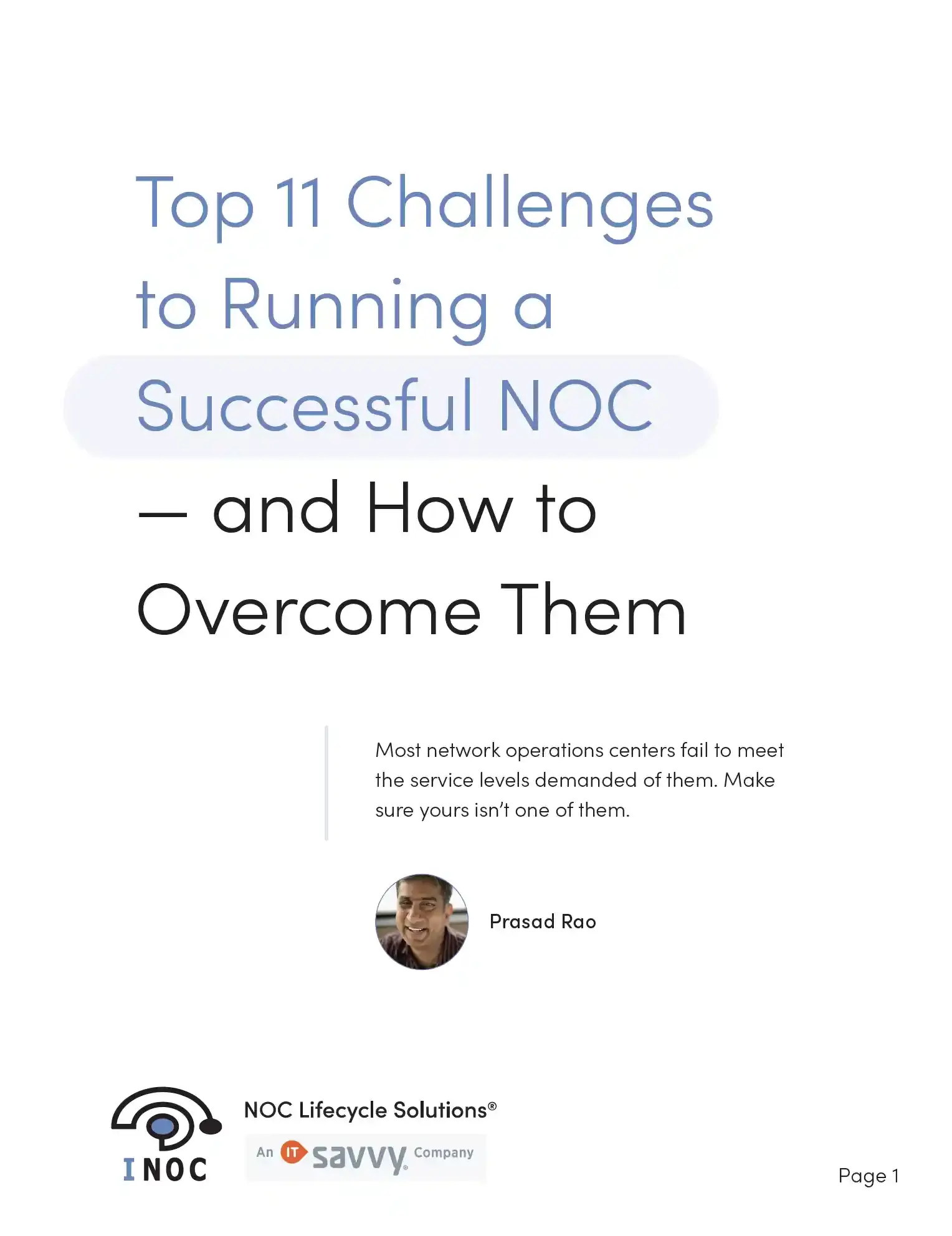
Free white paper Top 11 Challenges to Running a Successful NOC — and How to Solve Them
Download our free white paper and learn how to overcome the top challenges in running a successful NOC.






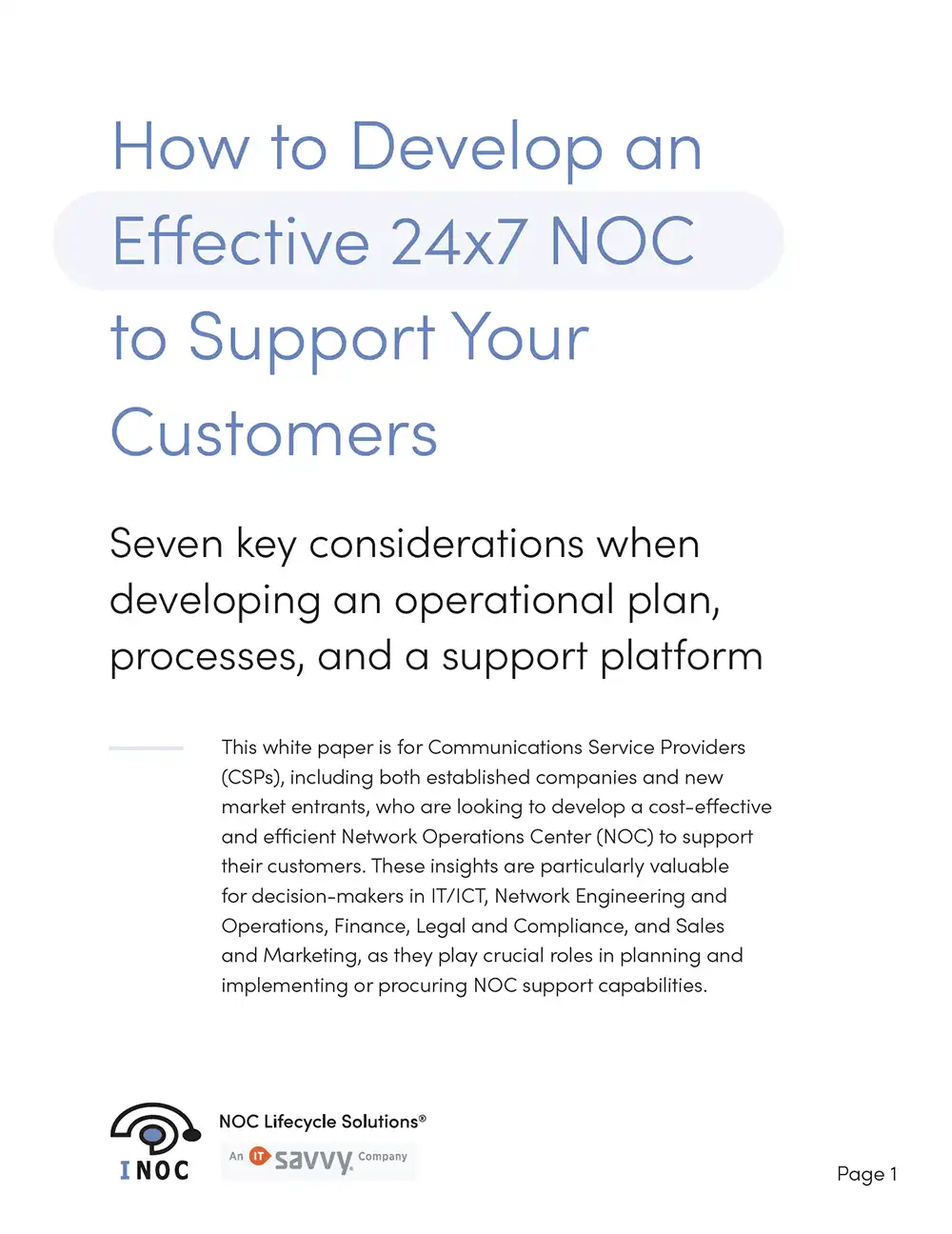

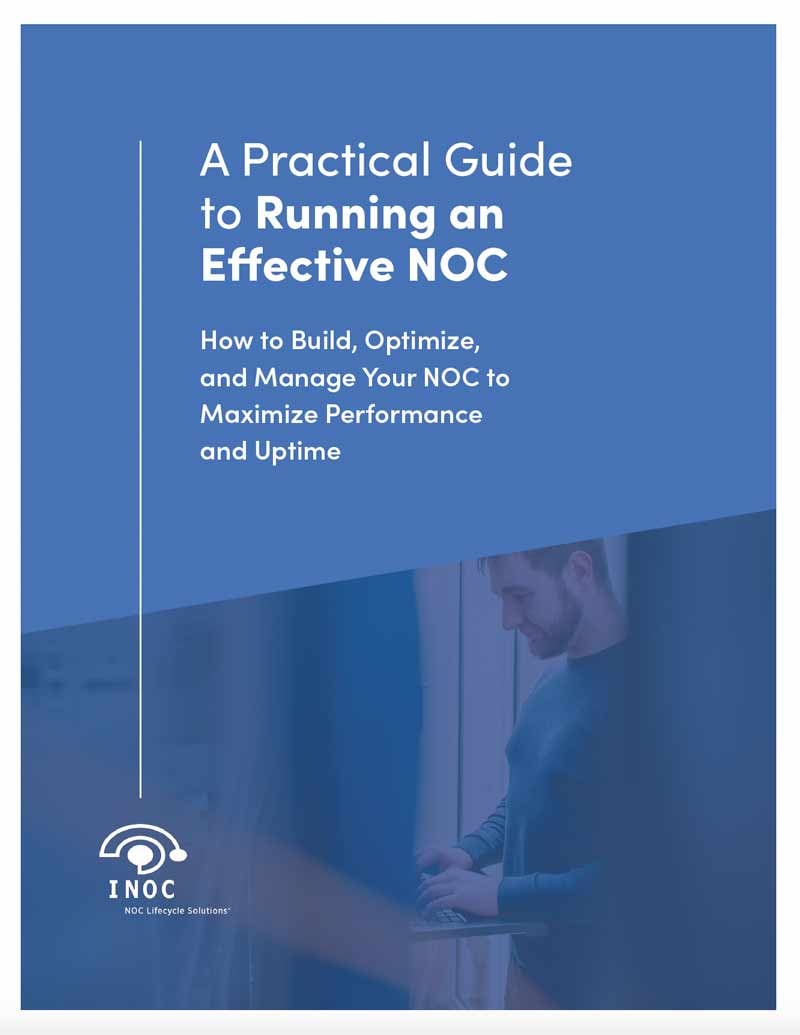
-images-0.jpg?height=2000&name=ino-WP-NOCPerformanceMetrics-01%20(1)-images-0.jpg)



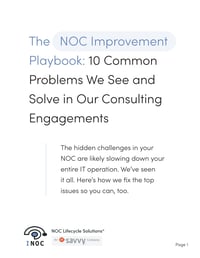

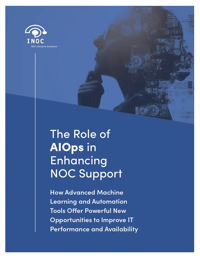

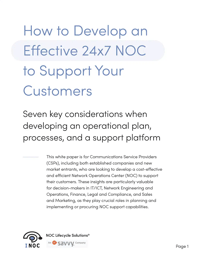
-images-0.jpg?width=200&height=259&name=ino-WP-NOCPerformanceMetrics-01%20(1)-images-0.jpg)